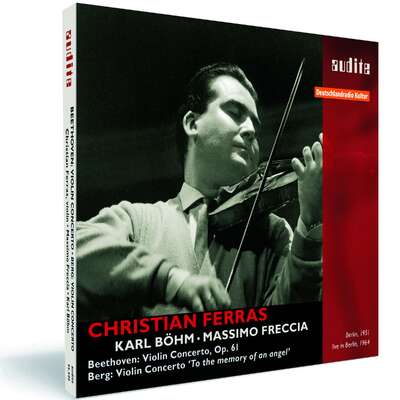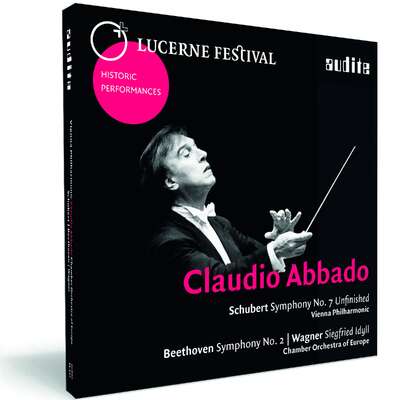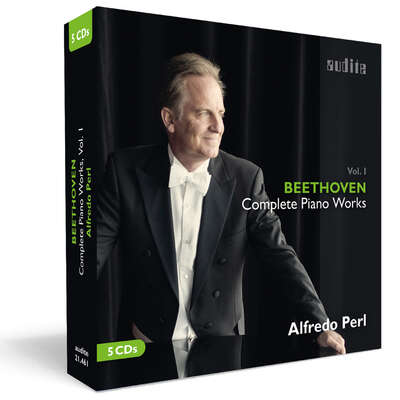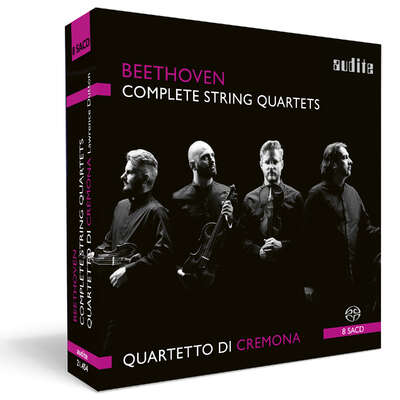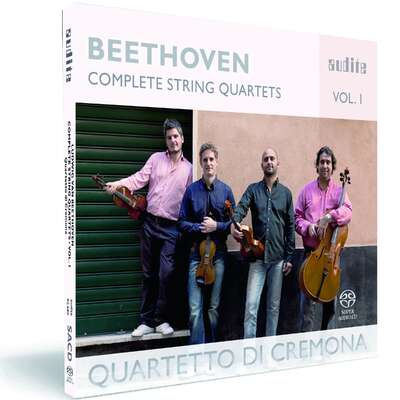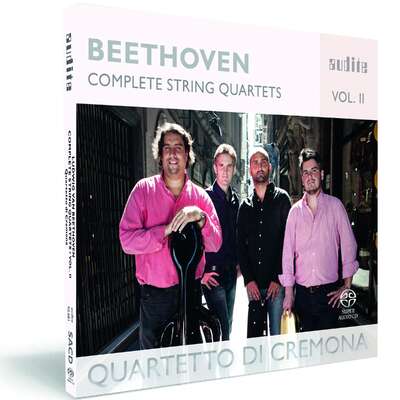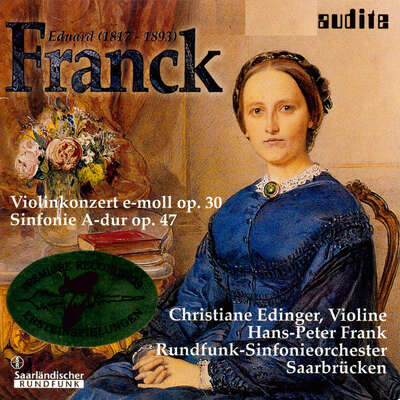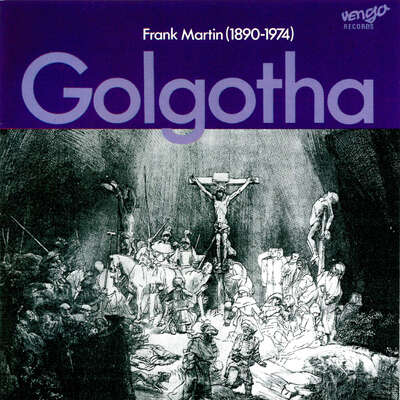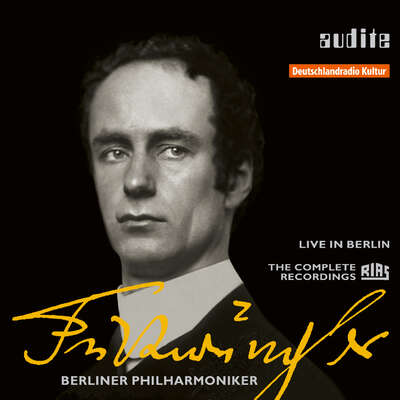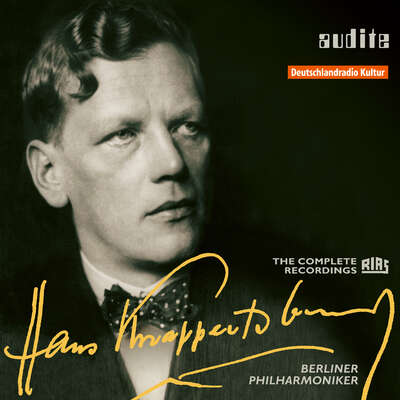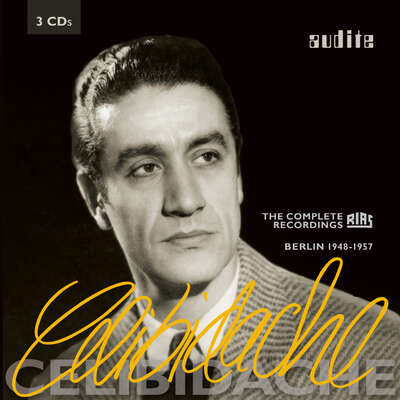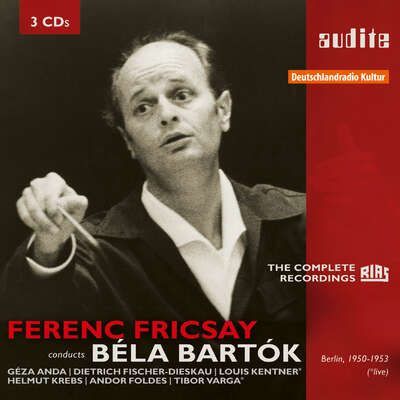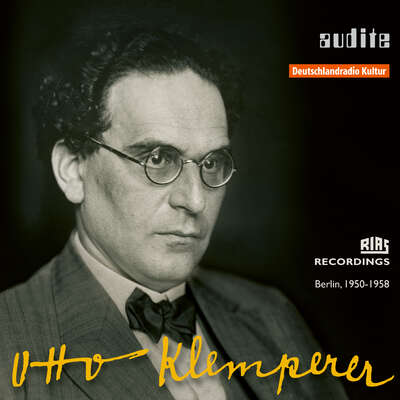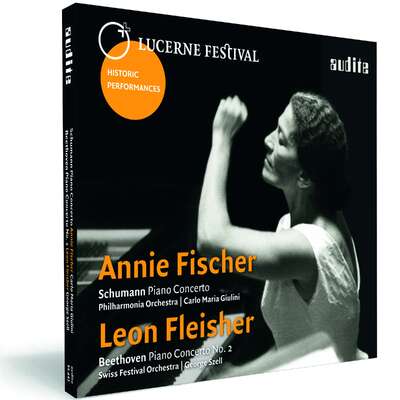
Aged 34, Ferenc Fricsay conducted the RIAS Symphony Orchestra for the first time and was immediately contracted as Chief Conductor. In only a few years, rehearsing unrelentingly, he transformed the orchestra into an internationally renowned, top-class ensemble . The Beethoven recordings...more
"...führen hier das RIAS-Symphonie-Orchester mit dem Dirigenten Ferenc Fricsay auf einsamer Höhe in exzeptioneller Modernität aus dem Bewusstsein von Werktreue in einem Maß zusammen, das Gedanken an Surround Sound und 5.1 und manch andere Superaudiofinesse gar nicht erst aufkommen. Da tut es sogar das gute, alte Mono…" (Neue Musikzeitung)
Details
| Edition Ferenc Fricsay (VI) – L. v. Beethoven: Symphonies No. 7 & No. 8, Leonore Ouverture No. 3 | |
| article number: | 95.593 |
|---|---|
| EAN barcode: | 4022143955937 |
| price group: | BCB |
| release date: | 17. September 2008 |
| total time: | 75 min. |
Bonus Material
Informationen
Aged 34, Ferenc Fricsay conducted the RIAS Symphony Orchestra for the first time and was immediately contracted as Chief Conductor. In only a few years, rehearsing unrelentingly, he transformed the orchestra into an internationally renowned, top-class ensemble.
The Beethoven recordings were made towards the end of Fricsay’s first engagement with the RIAS; they show orchestra and conductor at the height of their collaboration. The virtuosity and precision of the orchestra’s performance in all sections makes the ensemble the ideal medium for Fricsay’s uncompromising interpretations. The recordings revive Fricsay’s music-making in its dazzling modernity – music-making which was unheard of and hugely influential around 1950, and whose consequence is fascinating even today.
There is a “Producer’s Comment” from producer Ludger Böckenhoff about this production avalaible.
The production is part of our series „Legendary Recordings“ and bears the quality feature „1st Master Release“. This term stands for the excellent quality of archival productions at audite. For all historical publications at audite are based, without exception, on the original tapes from broadcasting archives. In general these are the original analogue tapes, which attain an astonishingly high quality, even measured by today‘s standards, with their tape speed of up to 76 cm/sec. The remastering – professionally competent and sensitively applied – also uncovers previously hidden details of the interpretations. Thus, a sound of superior quality results. CD publications based on private recordings from broadcasts cannot be compared with these.
Reviews
Die Tonkunst | Juli 2013 | Tobias Pfleger | July 1, 2013 Edition Ferenc Fricsay – Werke von Haydn, Mozart, Beethoven, Rossini, Bizet, Brahms, Strauß, Verdi, Bartók u. a.
Ferenc Fricsay gehörte zu den bedeutenden Dirigenten des mittleren 20.Mehr lesen
Classic Collection | SUNDAY, DECEMBER 19, 2010 | Christopher Abbot | December 19, 2010
The Audite engineers have done a very creditable job, providing a clean-sounding remaster with plenty of instrumental detailing [...] Aficionados of Ferenc Fricsay will want this disc; I can happily recommend it to those listeners interested in postwar Beethoven and high-quality mono-era recordings.Mehr lesen
Fanfare | Issue 32:5 (May/June 2009) | Christopher Abbot | May 1, 2009
These recordings were made between 1952 (Lenore) and 1954 (No. 8) with the RIAS (Radio in the American Sector) orchestra under studio conditions inMehr lesen
The performance of the Seventh is impressive, with little of the “measured, weighty approach” that Miller detected in Fricsay’s performance of the “Eroica.” Tempos aren’t quite up to those supported by the latest research, but the only other remnants of old-school Beethoven interpretation that some (like me) will find objectionable are the omission of repeats in the first movement Vivace and in the fourth movement Allegro con brio. Those cuts aside, this is an enjoyable, spirited performance, with a convincingly fluid Allegretto and a rollicking, boisterous Presto.
As annotator Friedrich Sprondel writes, “Fricsay moves his performance of the Eighth towards the Seventh,” mostly by investing the first and last movements with a four-square deliberateness, and presenting the Eighth as the logical if slightly anachronistic bridge between the Seventh and the majestic Ninth. Absent the kind of light-textured, energetic reading more regularly heard now, this Eighth becomes monotonous, a kind of lumbering pixie trying to impress with its nimble footwork. The orchestra is impressive, however, and can’t be faulted for whatever disappointment the performance produces.
The recording of the Lenore Overture shows its age more than the symphonies, with copious tape hiss and exceedingly thin-sounding brass. This is a dramatically convincing (if occasionally slow-paced) performance, however, evidence of Fricsay’s years in the opera house (where he programmed the overture at the end of the opera as a kind of “dramatic résumé”).
Aficionados of Ferenc Fricsay will want this disc; I can happily recommend it to those listeners interested in postwar Beethoven and high-quality mono-era recordings.
www.musicweb-international.com | March 2009 | Colin Clarke | March 17, 2009
Ferenc Fricsay’s Fidelio is held by some to rival the great recordings and even stand above them. That he was a fine Beethovenian is furtherMehr lesen
This has to be one of the leanest ‘Sostenuto’ sections of the first movement of Beethoven’s Seventh I have ever heard. Discipline is all, something confirmed by the perfect transition into the Vivace. This, coupled with the dryness of the recording, put me strangely in mind of Toscanini. Fricsay does not take the first movement repeat, something that seems in keeping with the restless, relentless drive. The Allegretto has a similar relentless tread, while the true Presto of the third movement reminds us of what a superb ensemble the RIAS orchestra could be. The finale is remarkable for the quality and precision of its off-beat accents. Here, also, the drive of the first three movements is converted into fire. The sound is more than acceptable – only some unnatural trumpet highlighting towards the end obtrudes - the trumpets protrude because of the harsh, treble-based recording they are accorded.
Comparing Fricsay with Munch in the Eighth - using Decca LXT3053: Orchestre de la Société des Concerts du Conservatoire, Kingsway Hall in October 1947 - is fascinating. Munch is direct and punchy. His horns are vibrato-oriented in the Trio – and here it lends to the expressive intent. Fricsay is more intent on stressing the element of dance, especially in the first movement and the recorded sound on Audite is more easily approachable. Clarity of counterpoint is stressed, although not totally at the expense of generated excitement. The finale is heard in extraordinary detail. This is testimony to Fricsay’s ear rather than the recording per se.
The Leonore Overture was recorded three months before this Seventh. The introduction is astonishing in Fricsay’s painting of the scene - a dark prison cell. The clarinet, when it enters, is less a ray of light, more a representation in sound of severe longing. The main part of the overture sags a little though. By the way, the three parts of the overture are each given a separate track, which seems a little keen. Comparison of this version with Fricsay’s live RSO Berlin 5 February 1961 account on the IMG Artists “Great Conductors of the 20th Century” series (reviewed on this site by Terry Barfoot) finds the later version an immediately more arresting account. The recording is more “present” and the first, announcing, chord leaves us in no doubt as to Fricsay’s intent. It is fascinating to compare Fricsay pre- and post-departure. He left the orchestra in 1954, initially for Houston but when that failed for the Bavarian State Opera.
Audite are performing great archival services recently. The Fricsay collector should not hesitate.
CD Compact | Marzo 2009 | Emili Blasco | March 1, 2009 Audite Edición Ferenc Fricsay
A cabamos de recibir etos dos compactos de la colección que Audite dedicaMehr lesen
Schwäbische Zeitung | 01.01.2009 | Reinhold Mann | January 1, 2009 So klingt das Nachkriegsberlin
In das Nachkriegsberlin führen zwei Neuerscheinungen des Labels Audite.Mehr lesen
Neue Musikzeitung | 12/2008 | Wolf Loeckle | December 3, 2008 Brisant, brillant – Ferenc Fricsay dirigiert Beethoven
Dass Ludwig van Beethovens Symphonik am Beginn des dritten JahrtausendsMehr lesen
Journal de la Confédération musicale de France | décembre 2008 | December 1, 2008
L’orchestre prend une ampleur et développe une puissance expressive horsMehr lesen
Pizzicato | 12/2008 | Alain Steffen | December 1, 2008 Früher moderner Beethoven II
Die Veröffentlichung alter Archiv-Aufnahmen kann oft sehr interessant sein, zumal sie so manche Interpretationsfrage in ein ganz neues Licht stellt.Mehr lesen
Fricsays Beethoven ist scharf, kantig und voller Akzente, da gibt es keine überschäumenden Gefühle, wenig Sinn für romantisches Getue und kaum Verständnis für verblümten Ausdruck, dafür aber ein enormes rhythmisches Drive. Dieser Beethoven klingt sehr transparent, präzise, manchmal sogar fast maschinell. Die Eindeutigkeit dieser Einspielung der Siebten findet man in beschränktem Maße auch bei der Symphonie Nr. 8, die allerdings weitaus versöhnlicher und mozartnah daherkommt. Stringent, schnörkellos, aber ungemein dynamisch dann wieder die Leonore III-Ouvertüre. Herrliches Spiel vom RIAS-Symphonie-Orchester Berlin und eine relativ gute Aufnahmequalität sind weitere Merkmale der Produktion, wenn auch ein blechern klingendes Gesamtbild Fricsays objektive Konzepte etwas verzerrt.
www.classicstodayfrance.com | Décembre 2008 | Christophe Huss | December 1, 2008
Ce disque est un complément de la discographie de Ferenc Fricsay, puisqueMehr lesen
Thüringische Landeszeitung | Sonnabend, 18. Oktober 2008 | Dr. Wolfgang Hirsch | October 18, 2008 Dramatische Gestaltungskraft
Wenn sich bei der Interpretation von Beethovens Symphonien unter DirigentenMehr lesen



















